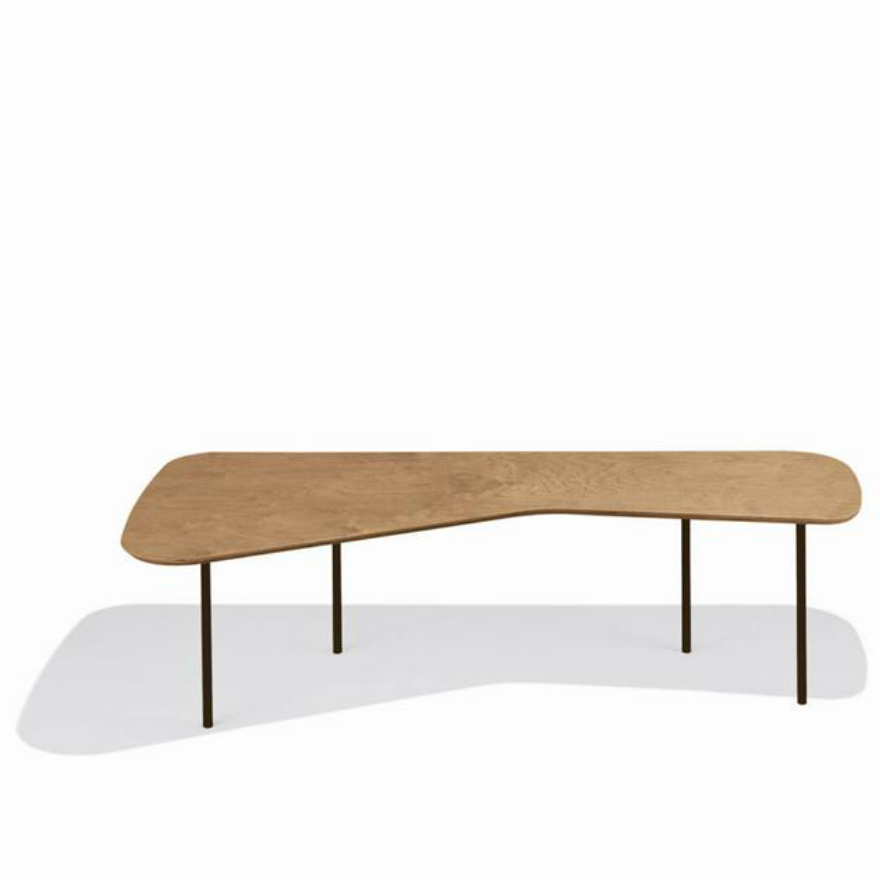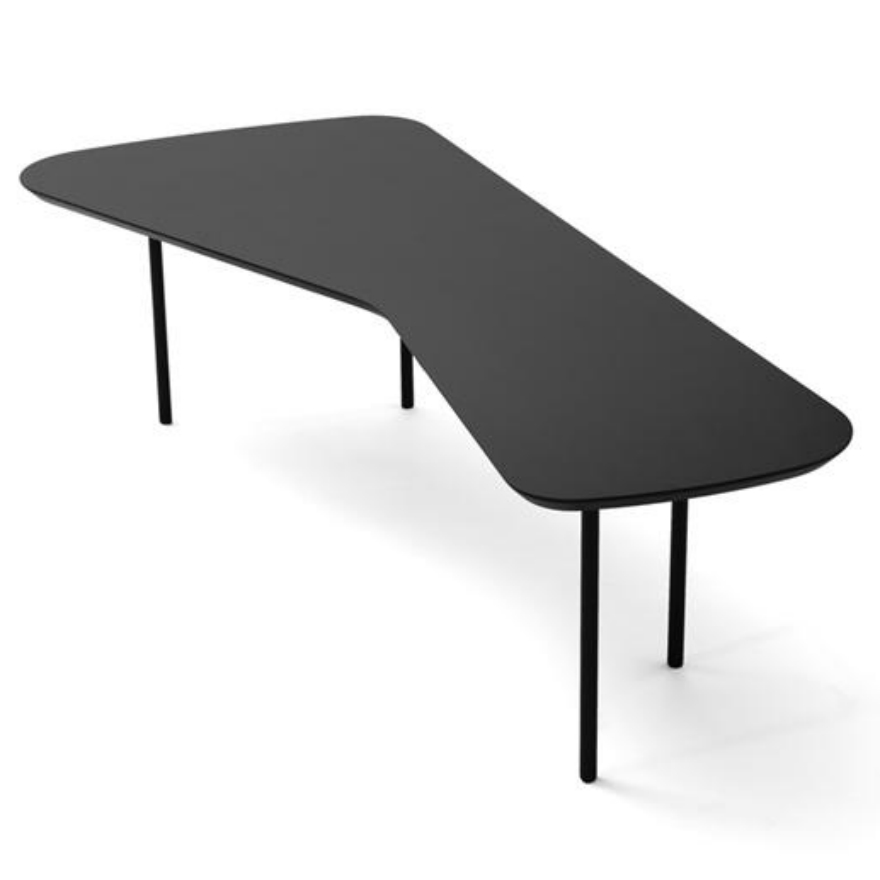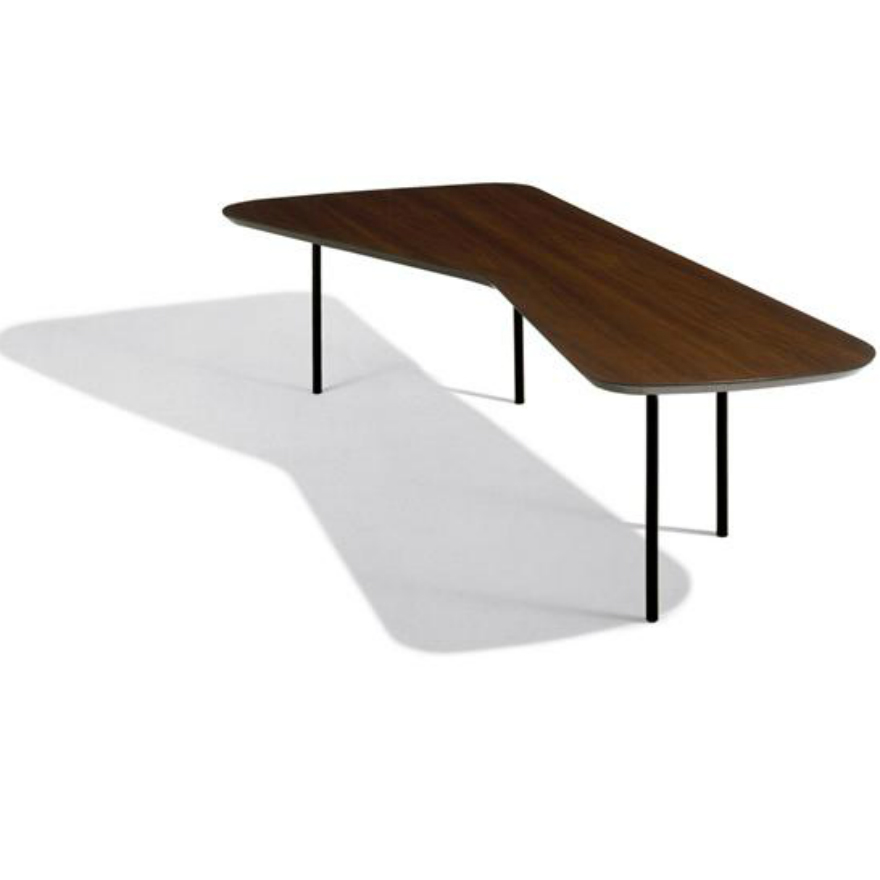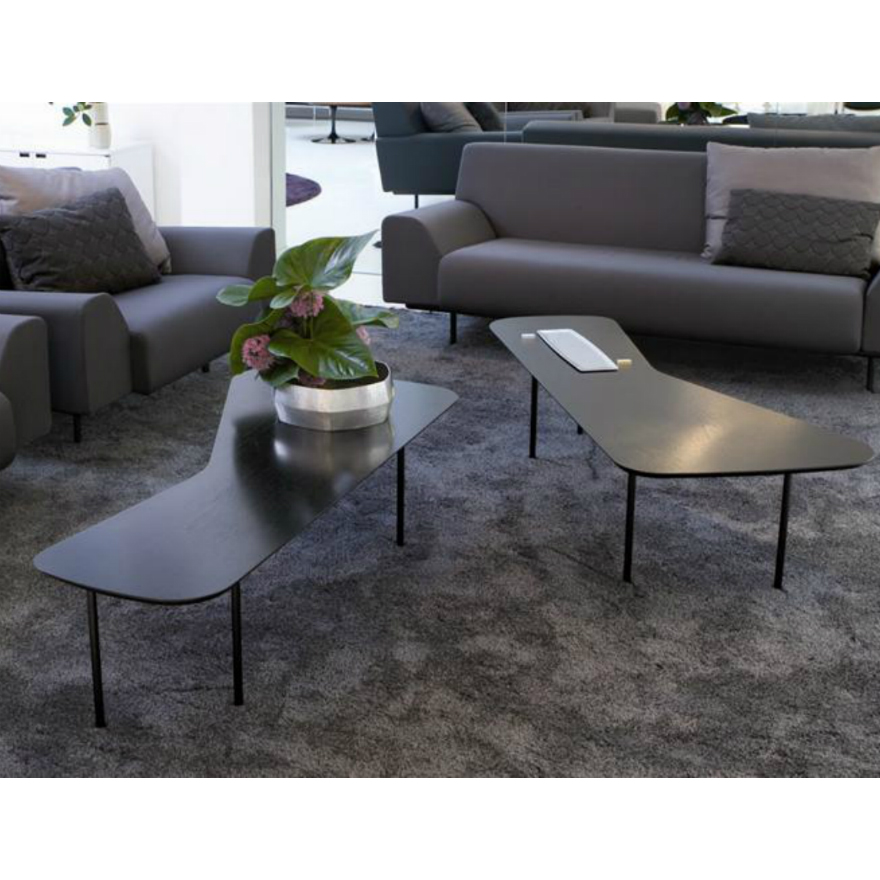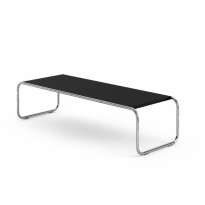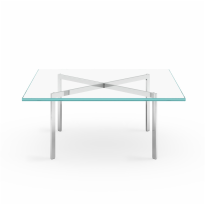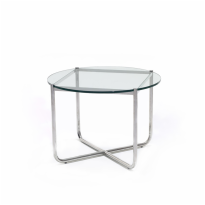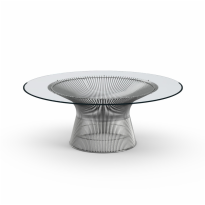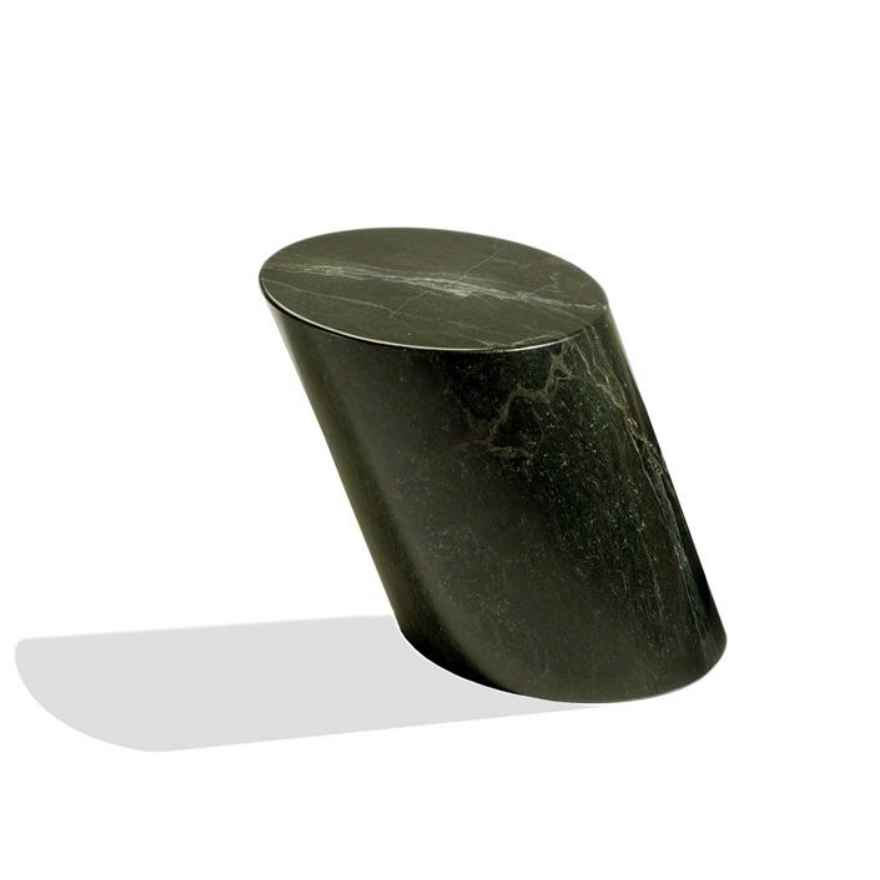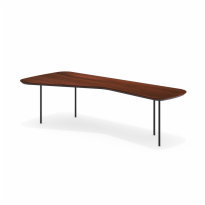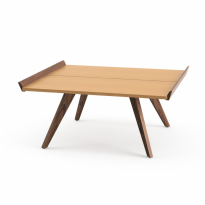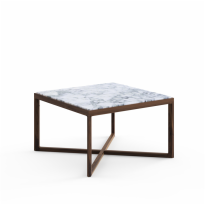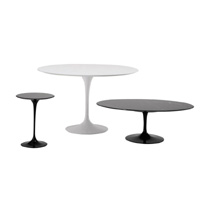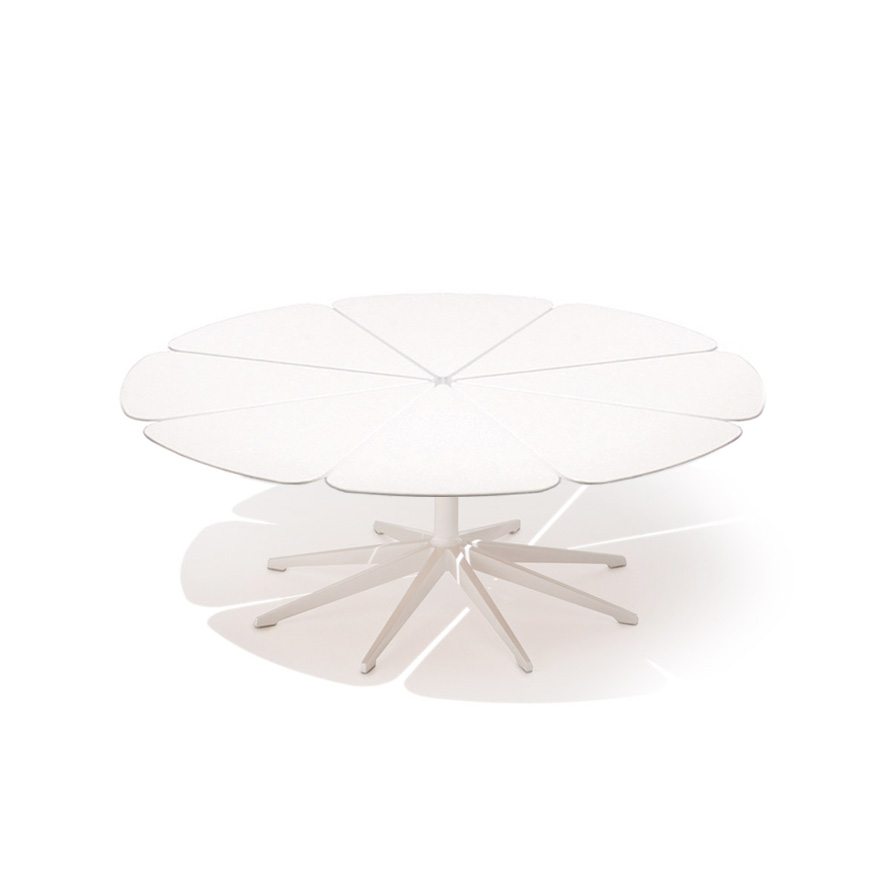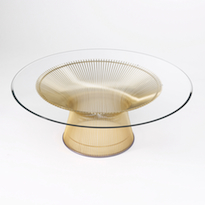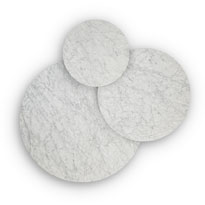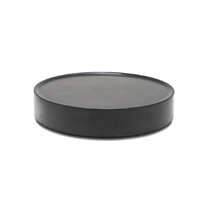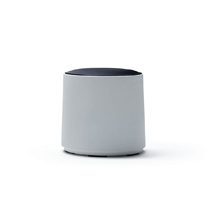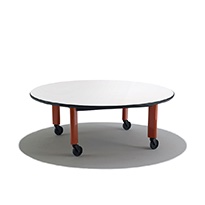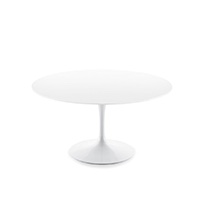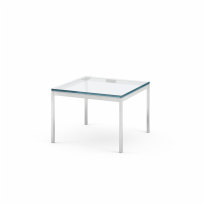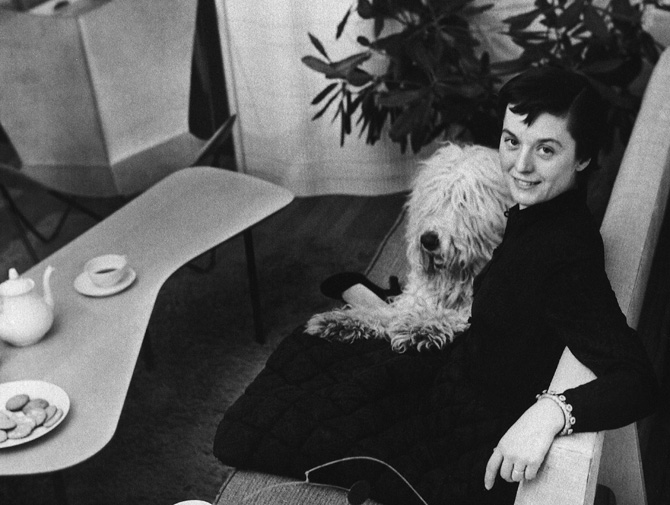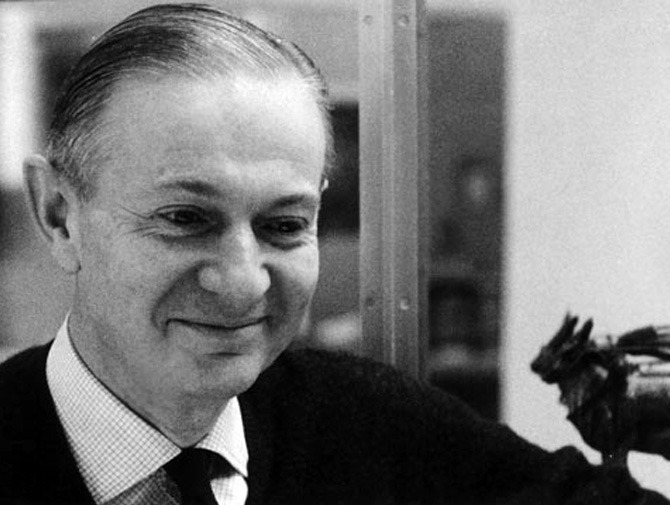Alexander Girard described himself as “a reasonable and sane functionalist, tempered by irrational frivolity.” The Coffee Table, introduced to the Knoll catalogue as the Model 108 in 1948, reflects the playful spirit he injected into the often austere modern vocabulary. The table was an early Knoll Classic, and is prominently featured in one of the most iconic portraits of Florence Knoll and her dog, Cartree.
Girard’s furniture and, more famously, his textile designs defined a new kind of “opulent modernism.” Often drawing inspiration from traditional folk art, his pioneering and innovative approach to design helped usher in the colours, whimsy and amoebic shapes synonymous with 1960’s America.
After a major retrospective or Girard’s work at the Cooper Hewitt National Design Museum in 2004, Knoll reintroduced the Coffee Table.
